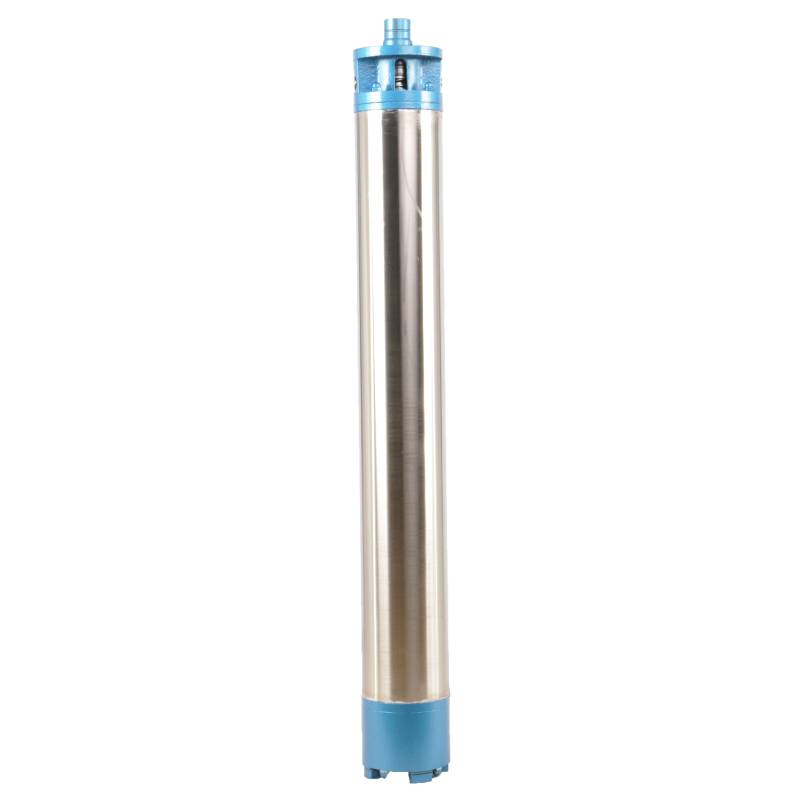Dec . 04, 2024 05:34 Back to list
Comparison of Submersible Pumps and Jet Pumps for Efficient Water Solutions
Submersible Pump vs. Jet Pump A Comprehensive Comparison
When it comes to selecting the right pump for a water supply system, the choice often boils down to two popular options submersible pumps and jet pumps. Each of these pumps has distinct features, advantages, and limitations, making them suitable for different applications. Understanding their differences can help homeowners and industry professionals make informed decisions based on their specific water needs.
What is a Submersible Pump?
A submersible pump is designed to operate while submerged underwater. This type of pump is equipped with a sealed motor that is hermetically sealed to keep it protected from water ingress. The pump is placed directly into the water source, such as a well, pond, or borehole, and functions by pushing water to the surface.
Submersible pumps are particularly beneficial in deep-water applications, as they can push water up from significant depths with high efficiency. They utilize a multi-stage design, which involves several impellers that work together to increase pressure and lift water, making them ideal for deep wells or large agricultural applications.
What is a Jet Pump?
In contrast, a jet pump operates above the water source and uses a jet of water to create a vacuum that draws water into the pump for distribution. Jet pumps rely on a combination of an electric motor, impeller, and venturi nozzle to function. The motor generates centrifugal force, creating a high-speed flow of water through the venturi, which causes a drop in pressure. This drop allows water from the source to be drawn into the pump.
Jet pumps are commonly used for shallow wells (typically up to 25 feet) and are ideal for residential applications where depth is not a significant concern. They are often more straightforward to install than submersible pumps, given that they do not require submersion.
Advantages of Submersible Pumps
1. High Efficiency Submersible pumps tend to be more efficient than jet pumps, especially for deeper applications. Their design enables them to move water more effectively, reducing energy costs.
2. Less Noise As submersible pumps operate underwater, they produce less noise, making them more suitable for residential areas where noise reduction is a priority.
submersible pump vs jet pump

4. Space Savings Since the pump is submerged, there’s no need for a large above-ground apparatus, allowing for more efficient use of space.
Advantages of Jet Pumps
1. Installation and Maintenance Jet pumps are typically easier to install and maintain, particularly for shallow wells. They are accessible and do not require specialized knowledge for basic troubleshooting.
2. Cost-Effective for Shallow Applications For homes or farms with shallow water sources, jet pumps are often more affordable and sufficient for meeting water demands.
3. Verifiable Performance Jet pumps provide visible performance indicators, allowing operators to quickly assess their working condition without needing to lift the pump from the water.
4. Flexibility Jet pumps can be more versatile in terms of adaptability; for example, they can often be used in a variety of applications, including irrigation and home water supply.
Challenges in Choosing Between Them
While both pump types have their advantages, there are also challenges to consider. Submersible pumps may require more upfront investment and professional installation due to their complexity. On the other hand, jet pumps can struggle with suction loss if the water level drops significantly, which can affect their performance.
Conclusion
In conclusion, the choice between a submersible pump and a jet pump should be guided by your specific water needs, the characteristics of your water source, and your budget. Submersible pumps excel in deep applications and longevity, while jet pumps offer ease of installation and cost-effectiveness for shallow wells. Evaluating these factors will lead to informed decisions, ultimately ensuring reliable water supply for any application.
-
Submersible Water Pump: The Efficient 'Power Pioneer' of the Underwater World
NewsJul.01,2025
-
Submersible Pond Pump: The Hidden Guardian of Water Landscape Ecology
NewsJul.01,2025
-
Stainless Well Pump: A Reliable and Durable Pumping Main Force
NewsJul.01,2025
-
Stainless Steel Submersible Pump: An Efficient and Versatile Tool for Underwater Operations
NewsJul.01,2025
-
Deep Well Submersible Pump: An Efficient 'Sucker' of Groundwater Sources
NewsJul.01,2025
-
Deep Water Well Pump: An Efficient 'Sucker' of Groundwater Sources
NewsJul.01,2025
-
 Submersible Water Pump: The Efficient 'Power Pioneer' of the Underwater WorldIn the field of hydraulic equipment, the Submersible Water Pump has become the core equipment for underwater operations and water resource transportation due to its unique design and excellent performance.Detail
Submersible Water Pump: The Efficient 'Power Pioneer' of the Underwater WorldIn the field of hydraulic equipment, the Submersible Water Pump has become the core equipment for underwater operations and water resource transportation due to its unique design and excellent performance.Detail -
 Submersible Pond Pump: The Hidden Guardian of Water Landscape EcologyIn courtyard landscapes, ecological ponds, and even small-scale water conservancy projects, there is a silent yet indispensable equipment - the Submersible Pond Pump.Detail
Submersible Pond Pump: The Hidden Guardian of Water Landscape EcologyIn courtyard landscapes, ecological ponds, and even small-scale water conservancy projects, there is a silent yet indispensable equipment - the Submersible Pond Pump.Detail -
 Stainless Well Pump: A Reliable and Durable Pumping Main ForceIn the field of water resource transportation, Stainless Well Pump has become the core equipment for various pumping scenarios with its excellent performance and reliable quality.Detail
Stainless Well Pump: A Reliable and Durable Pumping Main ForceIn the field of water resource transportation, Stainless Well Pump has become the core equipment for various pumping scenarios with its excellent performance and reliable quality.Detail
